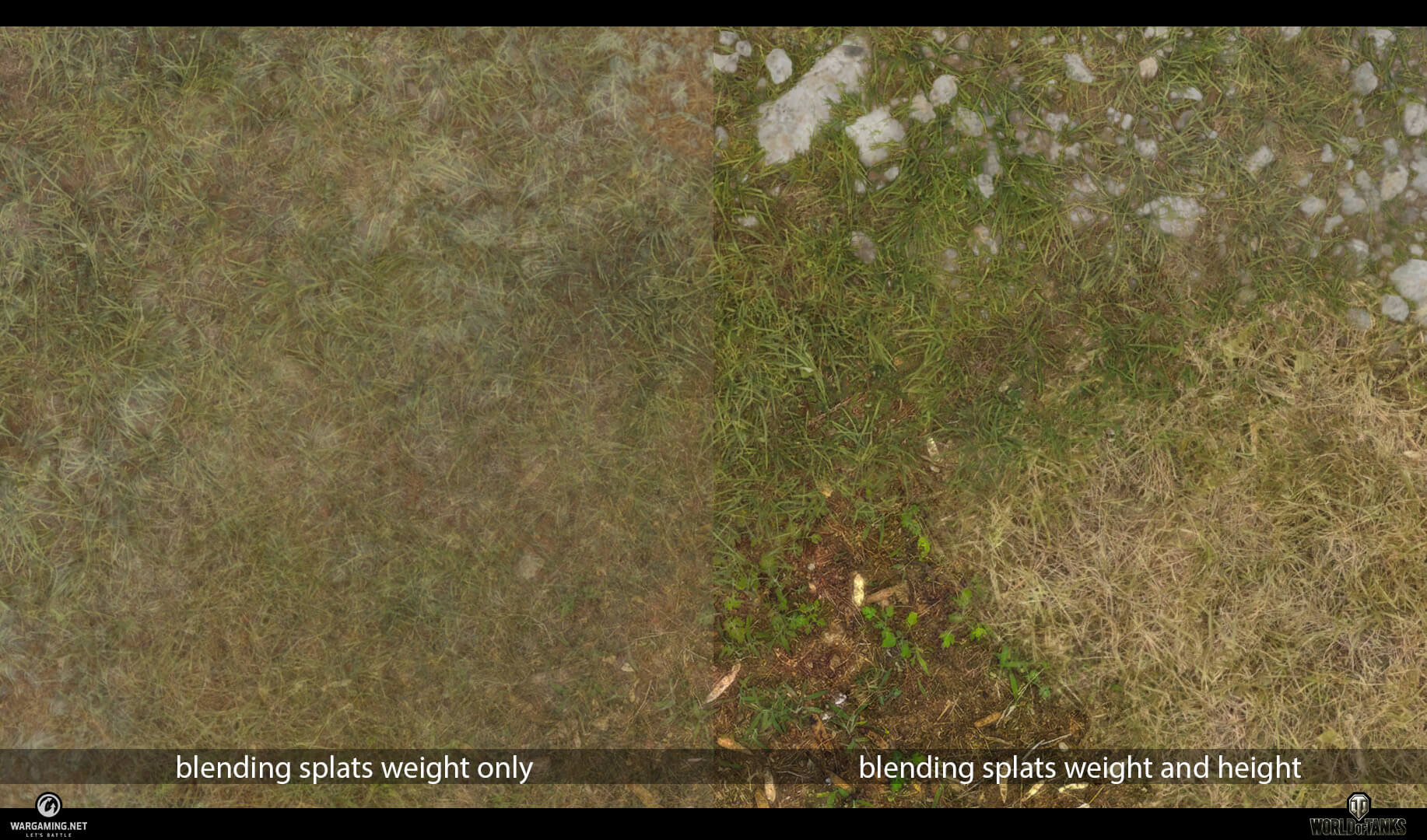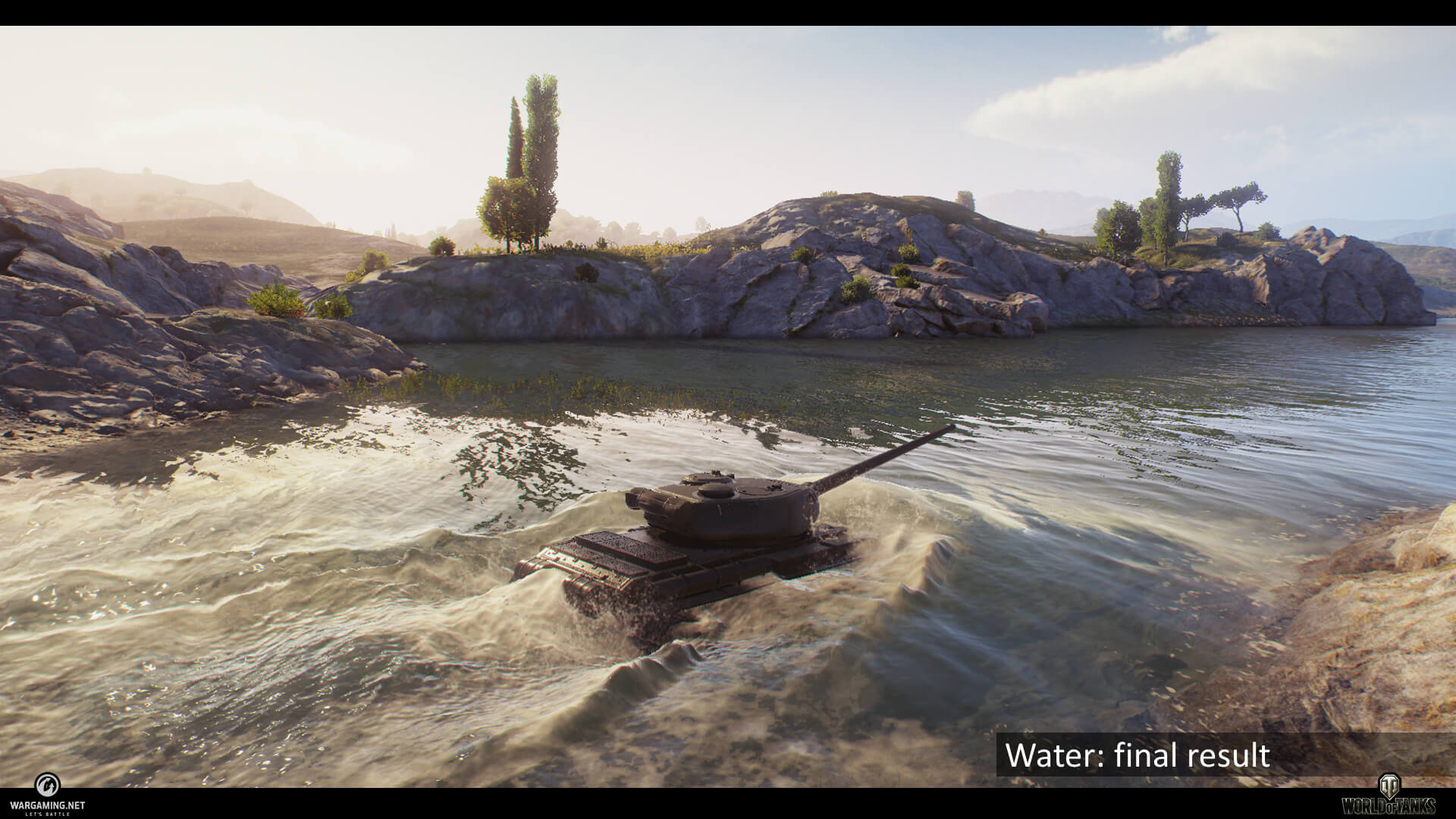Source: Portal
To make a map as realistic as possible, it’s vital that the graphics engine really make the landscape shine. Terrain and water are two of the key elements in World of Tanks for making great battlefields so let’s go into further detail to see how it’s all changing for the better.
Video Player
Terrain: It’s One of Many Layers
With the new graphics engine, we increased both the geometric and textural detail of the landscape. Even the tiniest elevation is more noticeable—and all the small things: grass, leaves, and stones. The level of detail is much more than you’ve ever experienced before in World of Tanks.


Virtual texture has been used to increase the level of detail while keeping the performance at a similar level as before—it allows for improved blending of textures. When standing still the terrain will not change, however moving will result in new textures being generated gradually between frames.
Video Player
Outland: More Changes on the Horizon
Another goal is to increase the rendering of the terrain to the horizon—in simple terms, all the details beyond the map’s limits. As you may have seen on the Sandbox server, it looks impressive. Maps may seem familiar with a foreign twist. Space is no longer limited, for example:
- Prokhorovka – No longer limited by space constraints, the battle takes place in the midst of the endless steppe of Russia
- Himmesldorf – Clashes on this summertime map are transferred to the heat of the city battles in Danzig
- Mountain Pass – The natural landscape now becomes part of the mountain range found in the North Caucasus

